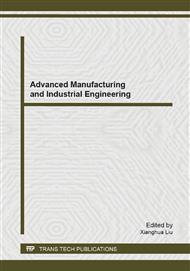p.874
p.879
p.884
p.888
p.892
p.901
p.905
p.909
p.913
Based on the Black-Box Method the Design of Simulated Microgravity Greenhouse Device
Abstract:
In order to research the effect of microgravity on plants traits and nutrients. The simulated microgravity greenhouse device was designed to simulate microgravity and research the growth of plants in a closed space. By the black-box method, functional elements of simulated microgravity greenhouse device were decomposed and redesigned by morphological matrix, And PLC was applied to be core control system for the simulated microgravity greenhouse device. The experiment showed that the simulated microgravity greenhouse device could run smoothly and meet the stability requirement. Besides, the plants experimental results showed that the Threonine and Glutamate content in Needle mushroom and Pocket mushroom under the device is higher than the natural group for 40 days.
Info:
Periodical:
Pages:
892-897
Citation:
Online since:
August 2014
Authors:
Keywords:
Price:
Сopyright:
© 2014 Trans Tech Publications Ltd. All Rights Reserved
Share:
Citation:


